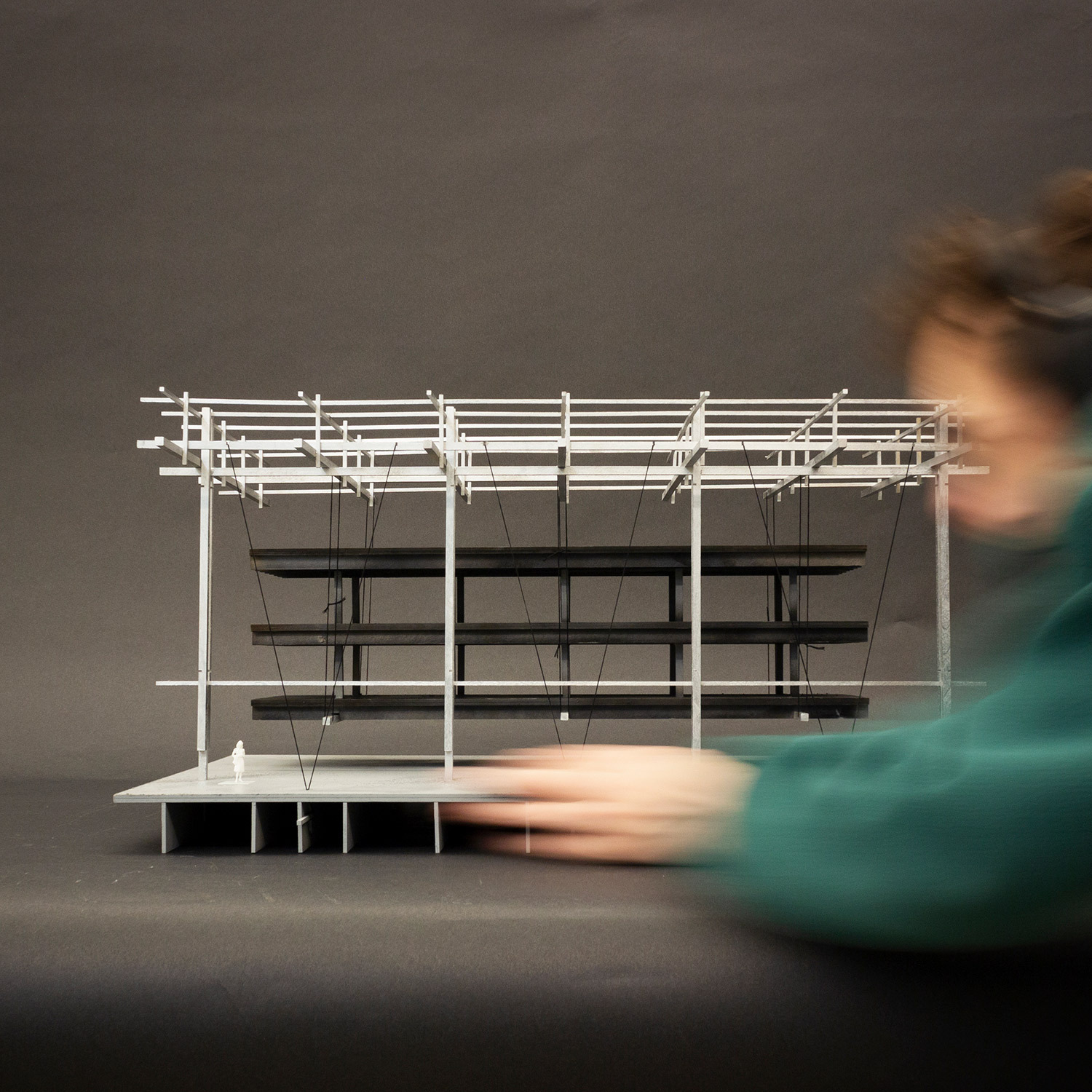Alum Connor Gravelle Unpacks Pedagogy and Practice
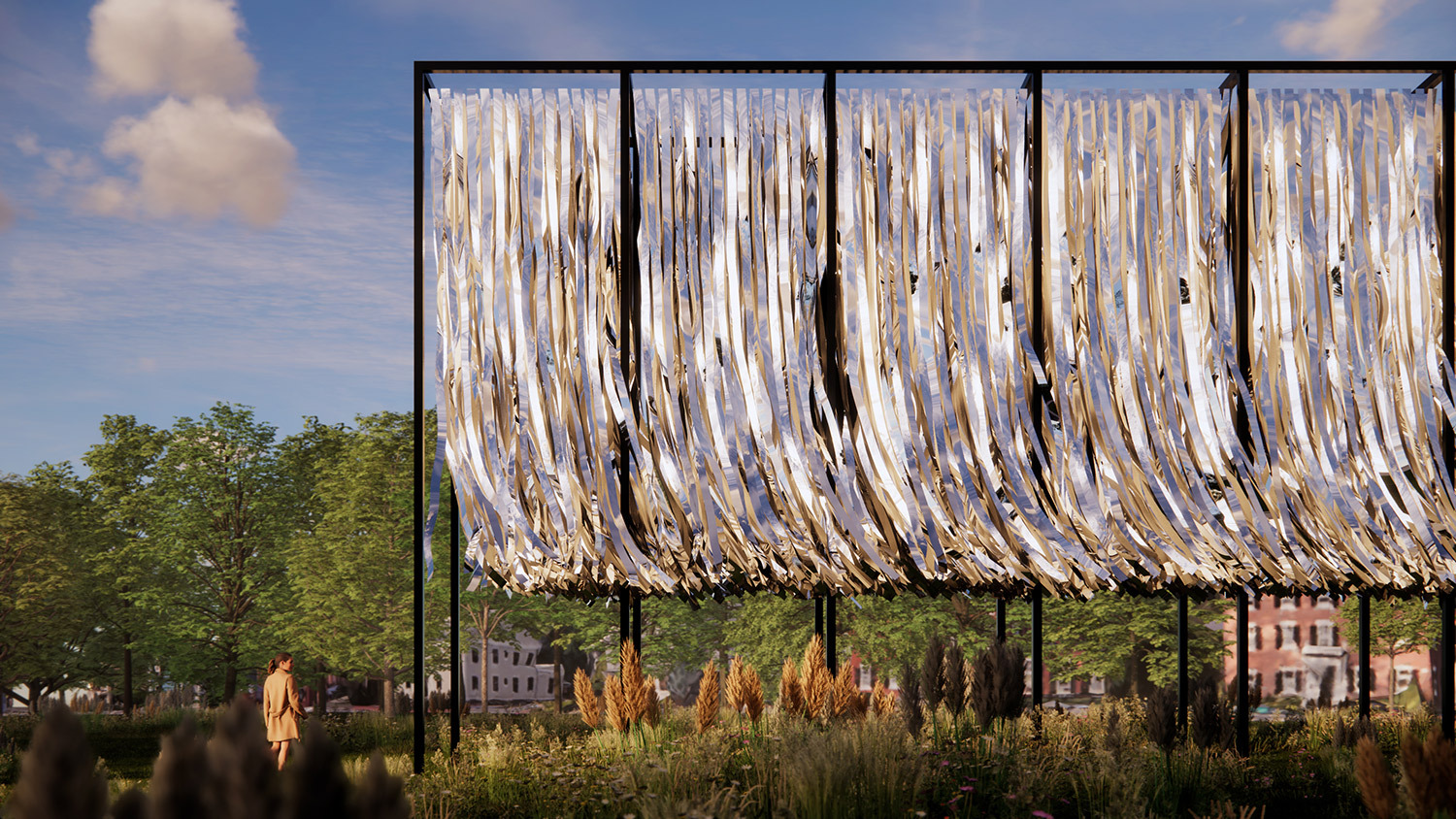
Memorial to Victims of State Persecution, Salem, 2022
Undermining the predisposition towards stoicism and monumentality as the default forms of memorialization, this proposal for the victims of the Witch Trials in Salem, Massachusetts, takes the shape of thousands of reflective ribbons. Light enough to drift in even the calmest breezes, their reflections constantly rework the perception of a site and its significance to historical memory.
Connor Gravelle is a licensed architect living in Cambridge, Massachusetts, where he is currently in his first year of a graduate degree program in architecture at the Harvard Graduate School of Design (GSD). Following his completion of a B.Arch from SCI-Arc in 2017, he relocated to Seoul, South Korea, to work at BCHO Architects Associates. After arriving in New York in 2019, he worked at HWKN and Handel Architects, where he saw a pair of large residential towers in Queens through construction documents and subsequent coordination during construction.
In his work, Connor looks to unravel the social, cultural, and political tendencies that circumscribe architecture in the built world to understand how the discipline entangles with its surrounding historical and spatial contexts. Now in graduate school, he hopes to further identify and refine his interests while staking a claim as an emerging practitioner in the field.
https://www.connorgravelle.us/project-grid
Instagram: @connorgravelle
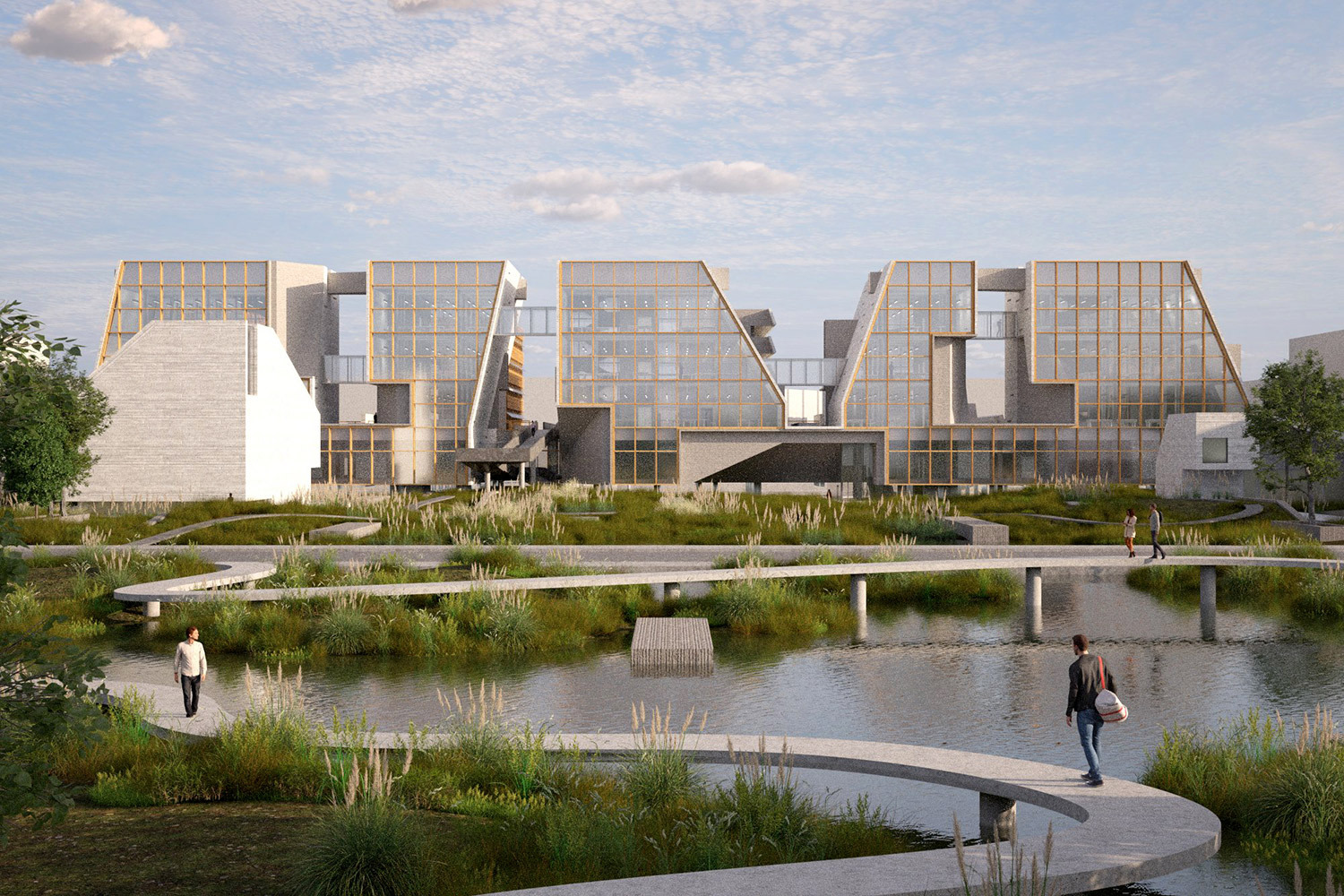
Chongming Island School of Design, 2023
This project for a university building housing five design-related majors outside of Shanghai involves an interrogation of ecology as a social agenda in which the interactions of students, faculty, the broader public and even natural forces are negotiated by architecture.
With Ryan Han
What first attracted you to studying in the B.Arch program at SCI-Arc?
I really wanted an education that would challenge me in every way possible. Especially going into something as broad and potentially all-encompassing as architecture, I wanted to find a program that I could know would push me to extensively evaluate my values, biases, and other presumptions about our built environment. Growing up on the East Coast, I was also deeply attracted to the creative atmosphere of Los Angeles. Culture, people, and conversations flow differently in LA (it must be the palm trees and unending supply of sun), and the city has some incredible resources to bring creative discussions into focus. SCI-Arc is by far one of the city’s most valuable spaces of discourse in architecture and urbanism, and the school’s tendency to act as an intellectual and discursive linkage between the other design institutions in the area (UCLA, USC, Woodbury, CalArts, ArtCenter, Otis, CalPoly Pamona/San Luis Obispo et cetera) was a major draw for me.
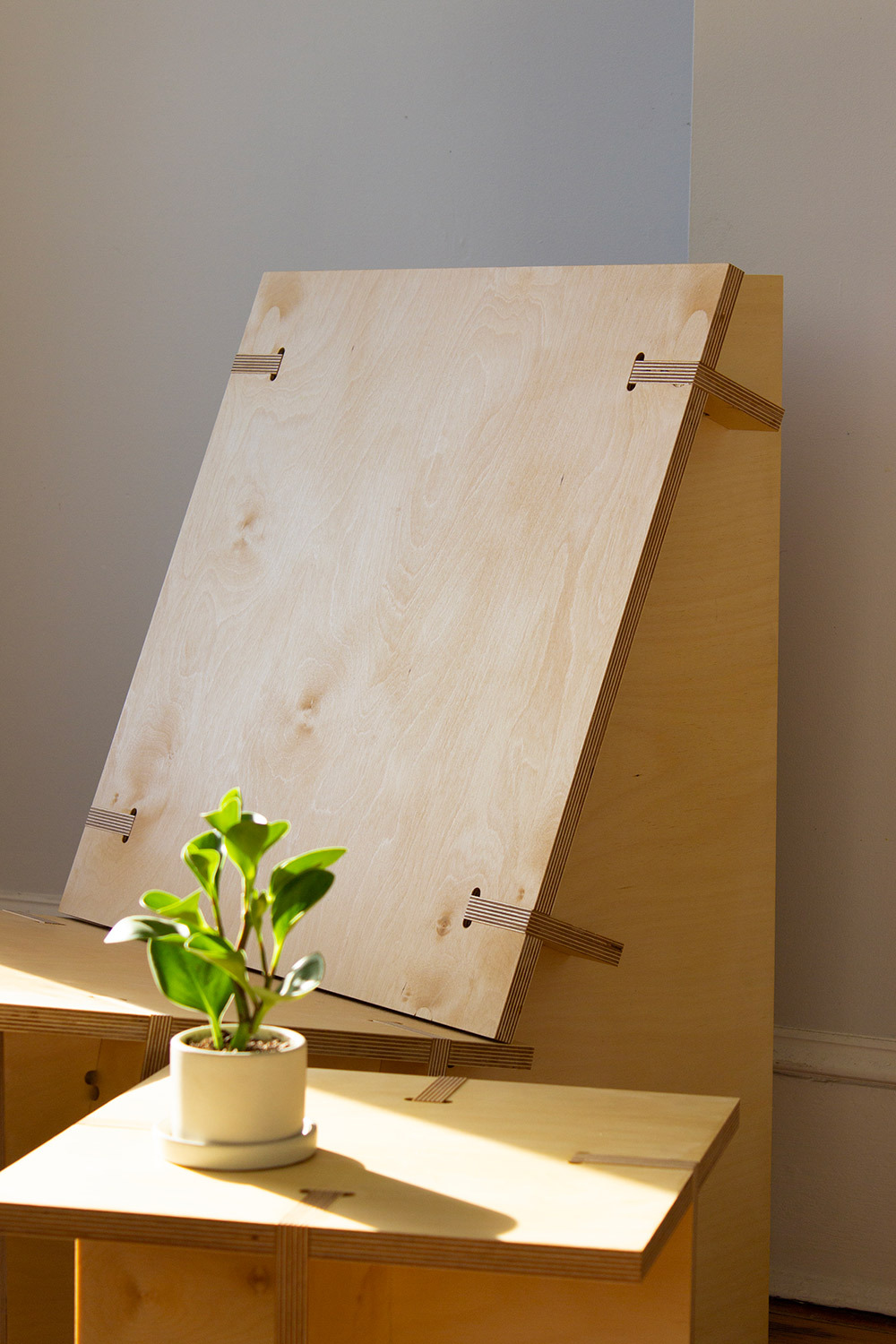
Simple Chair, 2023
This chair was developed to explore concise construction techniques inhabiting the blurry space somewhere between furniture and architecture. Cut from a single sheet, its form engenders the basic material capacities of plywood. Of particular interest was the emergence of an inherent material tectonic, in this case the traces of CNC tooling.
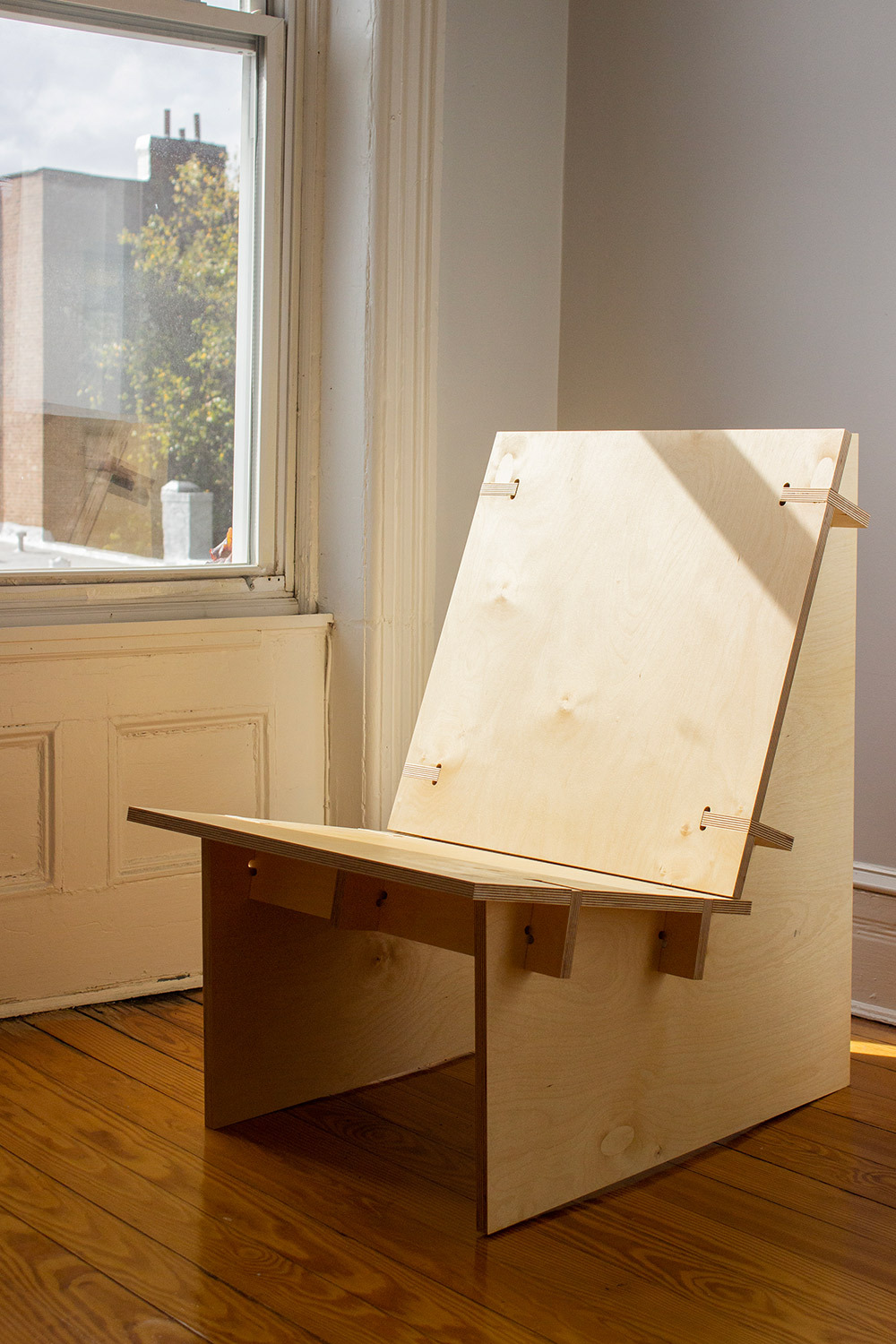
How do you bring your specific perspectives and skills you developed during this time into your practice/career?
SCI-Arc provided me with fantastic technical and critical foundations for my career. I’ve found that my experience in every office or academic environment in my life has benefitted from the skills I learned at the school. Particularly in regard to digital workflows and fabrication techniques, my SCI-Arc education has continued to prepare me for the unforeseen challenges of a profession defined by frequent encounters with complex, systems-based design challenges, even six years down the line. Critically, I was very lucky to have around me an amazing group of practitioners, thinkers, and other generally creative people at the school. The disciplinary foundation that I was taught at SCI-Arc was critical in enabling me to enter complex, historically intricate conversations not only out in the field but now at Harvard. Starting grad school at the GSD, I’ve been surprised at how well SCI-Arc prepared me conceptually to understand contemporary theories of architecture and modes of practice.
What was most impactful about your life as a student at SCI-Arc? How did your five years at SCI-Arc influence your practice?
SCI-Arc taught me to obsess creatively, to become entirely engrossed in a project as a way of getting as close as possible to what I do. I think this act of radical engagement in one’s work was something I was taught and encouraged to pursue at the school. I can specifically remember instances when faculty facilitated my exploration of peripheral interests in projects, and through these one-off endeavors I often gained a great deal of understanding and empathy for the historical, social, and disciplinary contexts of my work. In other words, SCI-Arc taught me to see the creative rabbit hole as an incredibly productive act of self-making that I see to be instrumental in my engagement with the world around me to this day.

Pavilion of Ten Columns, 2023
What happens when architecture is reduced to its absolute foundational pieces? This pavilion intentionally truncated the broad range of architectural possibilities to only two: columns and a roof. At their most elemental levels, how can fundamental aspects of design be stretched, pried apart and pushed to the boundaries of their typical roles to reveal something otherwise unknown about their nature?
What have you valued most in the transition from your time as an undergraduate student into the professional world? What elements have you been most surprised by?
I think the clearest experience I had emerging into the professional world was a sense of overwhelming scale and intricacy. Architecture is complex, almost endlessly so. Perhaps more than many others, our profession has its fingers in everything, so to speak. From ecology to material production to systems of extraction and even labor, architecture is implicated in nearly every thread of the contemporary world in one way or another. When I was first exposed to the embeddedness of what we do, I found it very overwhelming. I have, however, come to realize that this is both a necessary and deeply humbling quality of our discipline. Our world tends to valorize speed and efficiency over everything else, but architecture can literally move at the speed of paint drying. Our work tends to be obtuse and inexact, often fantastically so. The profession asks us to look critically at everything about the built world, and SCI-Arc did a great job in providing me the critical tools to begin evaluating these systems. Slowly, I’m coming to really love the entrenchment of architecture. Sure, it’s still overwhelming sometimes, but I encourage everyone to hold that discomfort as a tool for seeing the unseen layers of our world. Somewhere in there, I think we can find new possibilities for architecture and life.
What have been your most rewarding experiences either at SCI-Arc and/or since?
For me, the most rewarding experiences at SCI-Arc always revolved around very specific conversations I had in studios and seminar classes which elucidated for me my position within the field. Architecture school is all about striking a conversation, not only between you and your instructor but between you and yourself, you and a jury, or even you and culture more broadly. I was so lucky to have access to many talented practitioners during my time at SCI-Arc. John Enright, Anna Neimark, Elena Manferdini, David Freeland, and Russell Thomsen stand out particularly as amazing educators who were instrumental to how I think about architecture. I return to their lectures, critical positions, and attitudes of making still today. Among so many others engaged in SCI-Arc, these figures helped me understand where I come from culturally as a necessary exercise in determining where I will go, so to speak. I think architecture involves a constant process of self-discovery, and as such it benefits from frequent exposure to new modes of practice. SCI-Arc taught me a curiosity and open-mindedness to design processes that took me to Korea after graduation and then onto New York and eventually Cambridge. It formed a critical base structure for me that continues to hold the weight of everything I have learned and continue to learn down the line
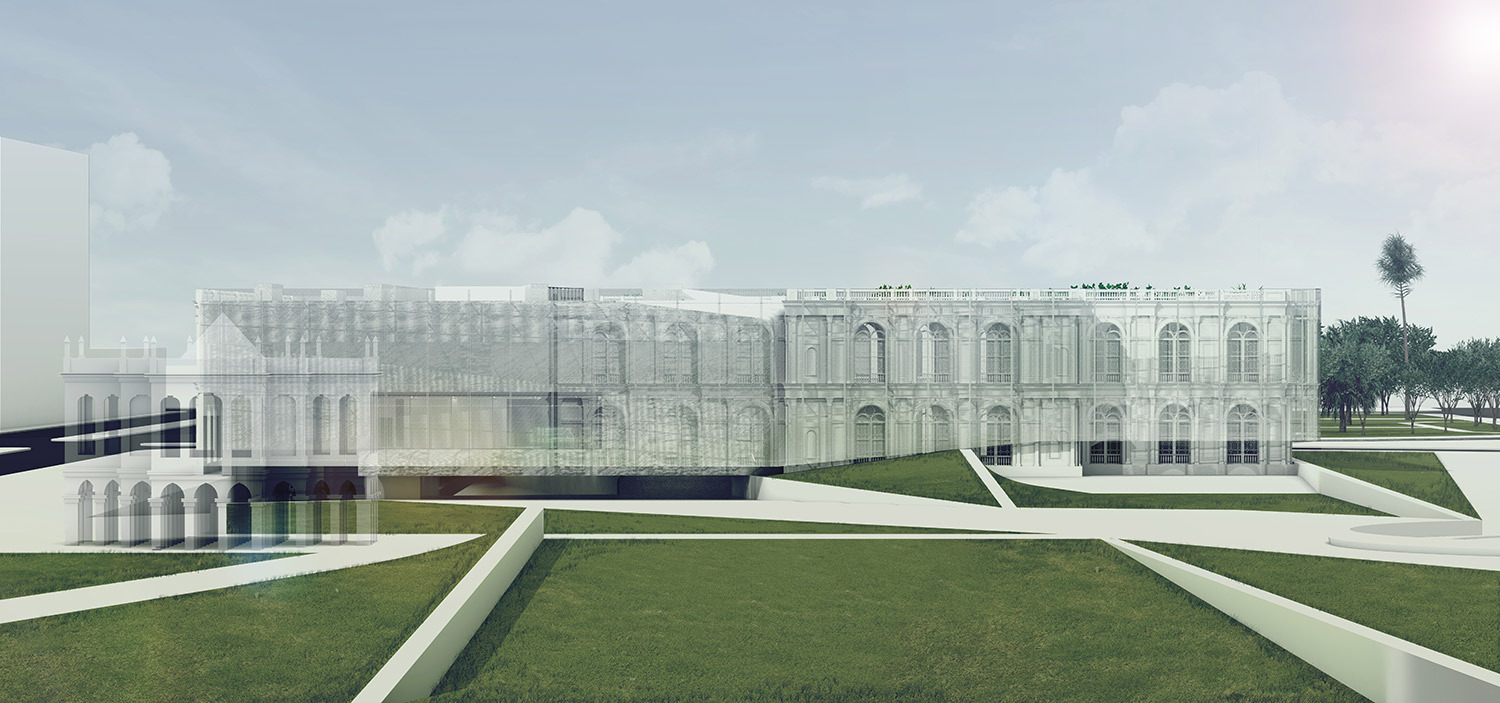
Lima Museum of Art, 2017
Produced as my thesis project at SCI-Arc, this proposal for an expansion to a culturally important institutional space in Lima, Peru, untangled the architectural implications of adapting existing buildings, especially when those structures exist in the complex intersection between historical context and contemporary identity.
You’ve worked in mediums ranging from furniture design to film, and more. How do these projects intersect with your experience studying at SCI-Arc? How do they diverge?
At SCI-Arc, any medium is game. I saw everything from films to photographs to a model made out of rubber chickens (seriously!). The school is fantastically medium-unspecific whenever it serves the productive exploration of new ways of approaching architecture or cultural production more generally. I recall a close friend presented most of her final project in second year as knitted fabric pouches – our assignment was to design a fashion school. I always found SCI-Arc extremely supportive in me bringing a diverse set of influences into projects, and the conversation around how we make architecture that I inhabited for those five years still deeply informs my approach to design. Incorporating cinema, painting, etymology and other platforms of analysis and expression, I feel that I learned how to curate and present a disciplinarily broad but conceptually specific set of references in every project. SCI-Arc taught me that we output architecture into a larger cultural landscape in which it interfaces with many other practitioners. These other participants can be traditional creatives themselves, or they can be an MEP engineer. It’s important to understand that what we do speaks a million languages to many other stakeholders, each seeing the building very differently from us. I am extremely grateful for having a space during my BArch to explore how I am implicated in those multifarious interactions, and it’s an ongoing theme I continue to unpack in my work to this day.
How do you see yourself moving forward with your practice, what themes, goals, and projects are you hoping to pursue?
The future is an ongoing site of construction located firmly in the present but labored on extensively by the past. I came back to school at the GSD to evaluate and refine my prerogatives in the field. I want to unpack everything I know – even the things I don’t know I know – in order to hone the best contribution I can to the field of architecture. After graduating, I hope to establish my own practice and engage teaching as a critical tool for participating in the discipline. I feel relatively agnostic to particular types of building or program. I’m most interested in architecture as it entangles with cultural histories and the complexities of site and ecology, all of which feel more pressing than ever in the contemporary world we inhabit. I believe such interplays between what we do and the world “outside” can happen in almost any form of architecture, from a public toilet to a palace. As I look back on my time at SCI-Arc, I see how teaching, practice and a continued sense of exploration drove my instructors to new places in their careers, and I hope to forge a path not dissimilar for myself. I’m incredibly thankful for the rigor and conviction I learned at SCI-Arc, and I cannot wait to continue to design my own position in the field as I move forward.
What advice or thoughts would you share with those interested in pursuing an architecture education at SCI-Arc?
I think it’s critical at SCI-Arc to be prepared to stake a claim. Whether it’s a project for an environmental systems class or your thesis, you need to be prepared to say why what you’re doing matters both in the sense of the work at hand and as it relates to broader dialogues. For sure, this can be intimidating at first, but a place like SCI-Arc is great at exposing you to a number of other passionate individuals and instructors who can help you understand what you’re interested in. I encourage anyone going into architecture, at SCI-Arc or otherwise, to be completely transparent about your prerogatives. School should be the place to put everything about yourself and your disciplinary position on the table to be engaged, critiqued, enraptured, entangled and refashioned with unrelenting constancy. If you can learn how to hold great conviction but keep an open mind, the process can be immensely enjoyable.
